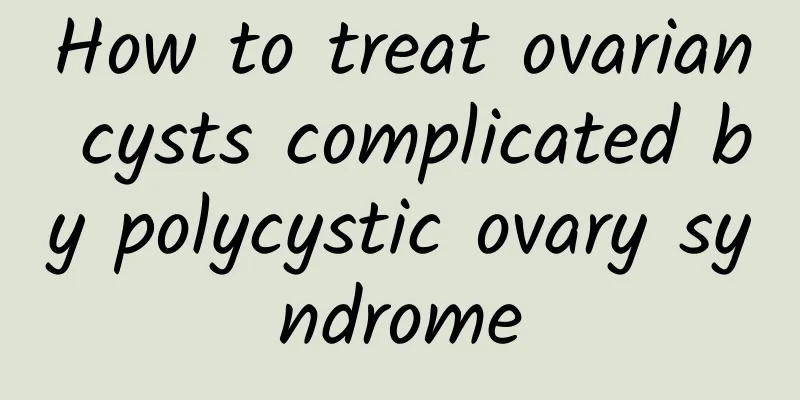What to do if you are infertile after artificial abortion?

|
Artificial abortion refers to an operation to terminate pregnancy by artificial means within 10 weeks of pregnancy in the early stage of pregnancy. The main targets are those who request termination due to contraceptive failure or various diseases that make it unsuitable to continue the pregnancy. It has little impact on physical health. Since this operation is generally not performed under direct vision, if the operation is not standardized or the genital inflammation has not been treated before the operation, it may cause postoperative complications and affect the next pregnancy. In the outpatient clinic, we often encounter many patients with secondary infertility who have undergone artificial abortion and have never become pregnant again. All of them are caused by complications after artificial abortion. The main complications are: (1) Adhesions of the cervix or uterine cavity: These are caused by infection after damage to the endometrium. Adhesions of the cervix prevent menstrual blood from flowing out and accumulate in the uterine cavity, or flow through the fallopian tubes to the pelvic cavity, causing abdominal pain, which may later lead to pelvic endometriosis. Mild adhesions of the uterine cavity can reduce menstruation, while severe adhesions can cause amenorrhea. (2) Damage to the functional layer of the endometrium: This is caused by excessive vacuum or curettage. If the functional layer of the endometrium is partially damaged, the main manifestation is a decrease in menstrual volume; if the functional layer of the endometrium is completely damaged, amenorrhea will occur, but there will be no symptoms of intrauterine adhesions. (3) Fallopian tube blockage: Fallopian tube blockage caused by endometritis The above three situations can hinder the movement and combination of sperm and egg, or affect the implantation of fertilized egg and cause infertility. If the basal body temperature is measured or the follicles are monitored by B-ultrasound after abortion, indicating that the ovarian function is normal and ovulation occurs, then the infertility is most likely caused by the above factors. The above diagnosis can be made through B-ultrasound, hysteroscopy and hysterosalpingography. |
<<: Abortion complications can lead to infertility
>>: What should women pay attention to after artificial abortion
Recommend
15 minutes of non-stop aerobic exercise to boost metabolic rate
Many people feel that they can never gain weight ...
How to relieve the increased appetite in autumn? 5 barley dishes to promote diuresis, reduce swelling, help lose weight and beautify your skin
The weather is cool in autumn, and autumn is a se...
Black bean weight loss method! 3 easy dishes to make
By Zheng Zhourong On the first day, I only ate bl...
Can I eat chili peppers after cervical erosion surgery?
Can I eat hot peppers after cervical erosion surg...
Is bacterial vaginosis an infectious disease?
Is bacterial vaginosis contagious? Do you know? B...
Analysis of the causes of hyperprolactinemia
What are the causes of hyperprolactinemia? Family...
What is hyperprolactinemia?
What is hyperprolactinemia? Hyperprolactinemia is...
How to take care of patients with ovarian cysts?
Among gynecological diseases, ovarian cyst is one...
Why do I have back pain during menstruation?
Some women experience back pain during menstruati...
How can women with cervical erosion be cured? What medicine is effective for women with cervical erosion?
What is cervical erosion? Experts say that cervic...
If you have pelvic inflammatory disease, you will usually have pain in your lower abdomen.
If you have pelvic inflammatory disease, you will...
Can cervical precancerous lesions be detected by B-ultrasound?
If you have cervical precancerous lesions in your...
5 Yoga Tips to Lose Fat Without a Tiger Back
[Key Points]: Fat easily accumulates on the back,...
shock! Calories in 2 slices of pork belly = 1 bowl of rice! Nutritionist teaches: 3 tips to avoid oily stomach when grilling meat or eating mooncakes
After the masks were lifted during the epidemic, ...
How to better prevent endometrial thickening
The greatness of women comes from having a uterus...









